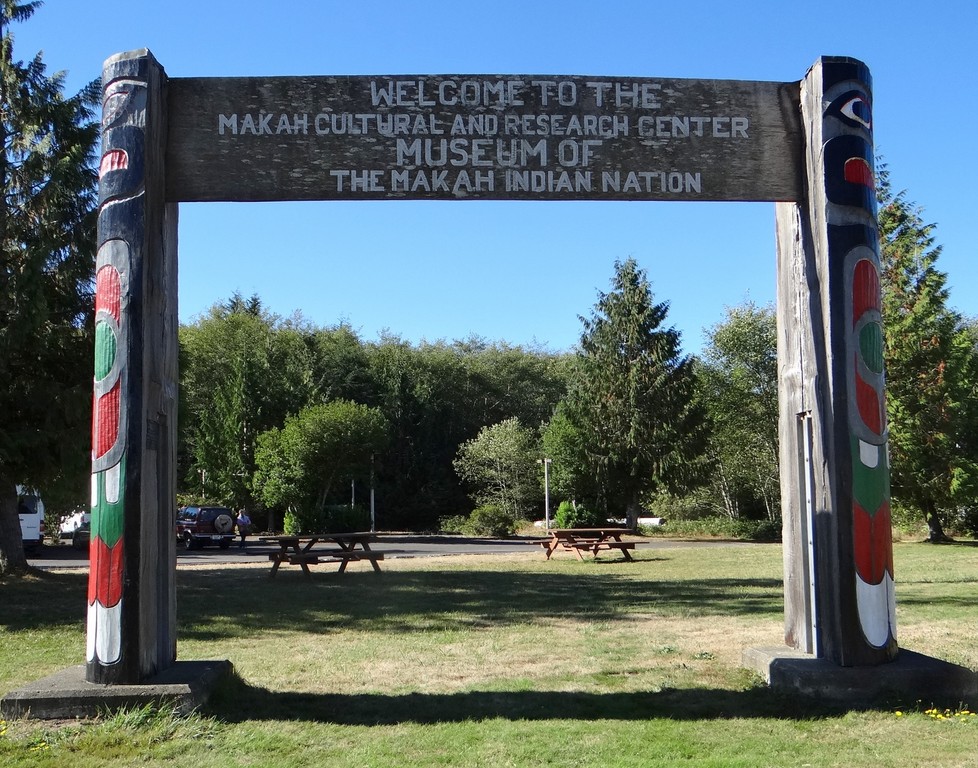
When you travel 112 and you get to this point, you are entering the Makhah Indian Reservation. I want to start by saying this is the best Indian Museum I've ever seen and I've been to several good ones. No pictures inside, but the story of these people is fascinating. The village right here, OZette, is the basis for information about the ancient people of this nation and it makes you realize how intelligent and resourceful they were.
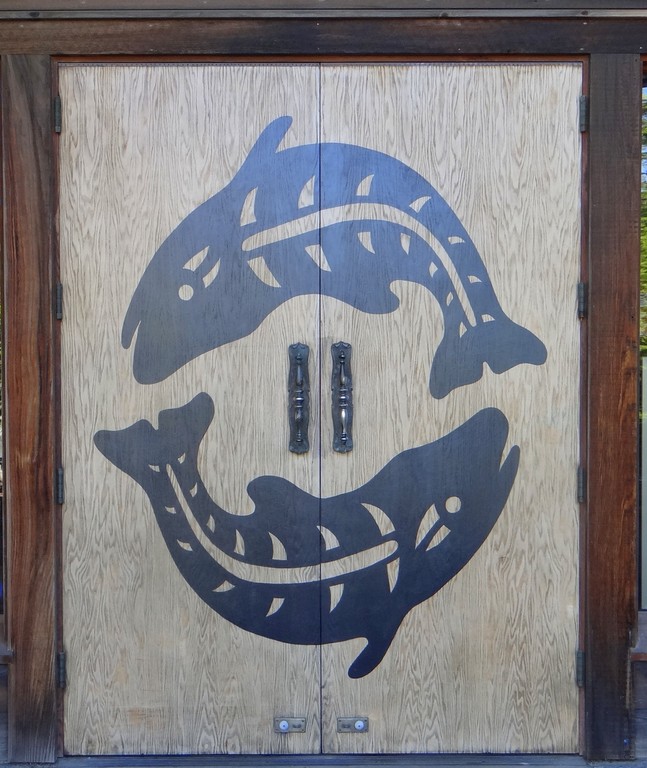
The doors to the museum have whales etched and painted on them. Living as they do next to the great ocean at their feet, their major food source was fish, seal, whale, gull eggs, bird meat and deer. They were not agriculturists in any way. Carbon dating old nets made from cedar bark showed they were on this land 4,000 years ago. That fact is what gives native people the right in any season on their ancestral lands.
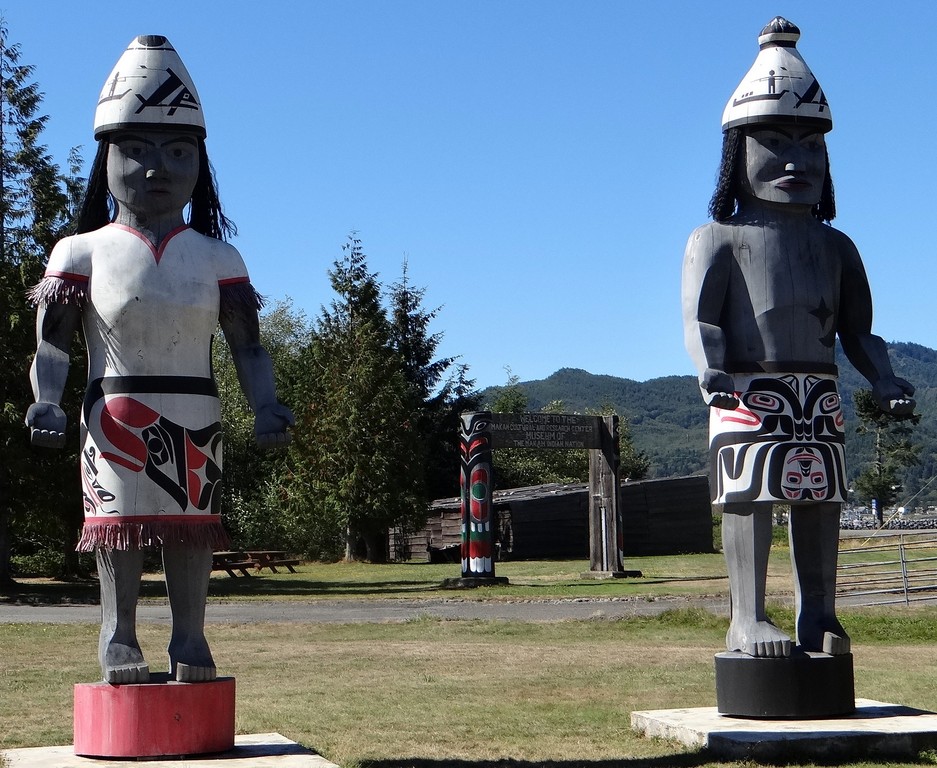
They built their family life around fishing and hunting. I lost part of my pictures and can't show you the whale boats they built. Carved from one giant cedar log and so symmetrical and balanced, it is hard to understand how they could build a boat with simple adz and wedges made from bone, sharp rocks and wood, capable of holding men and gear to hunt the leviathans of the deep. They burned smooth the outside of the cedar boat and scraped and polished it that no burr or unevenness could resist the water. They decorated their boats so people on shore could see who was coming in with the catch, be it salmon or part of the whale. Like the Portuguese, this ritual may have been from the dangers encountered hunting whale and cheering to know that their hunter father or brothers had returned alive from the hunt.
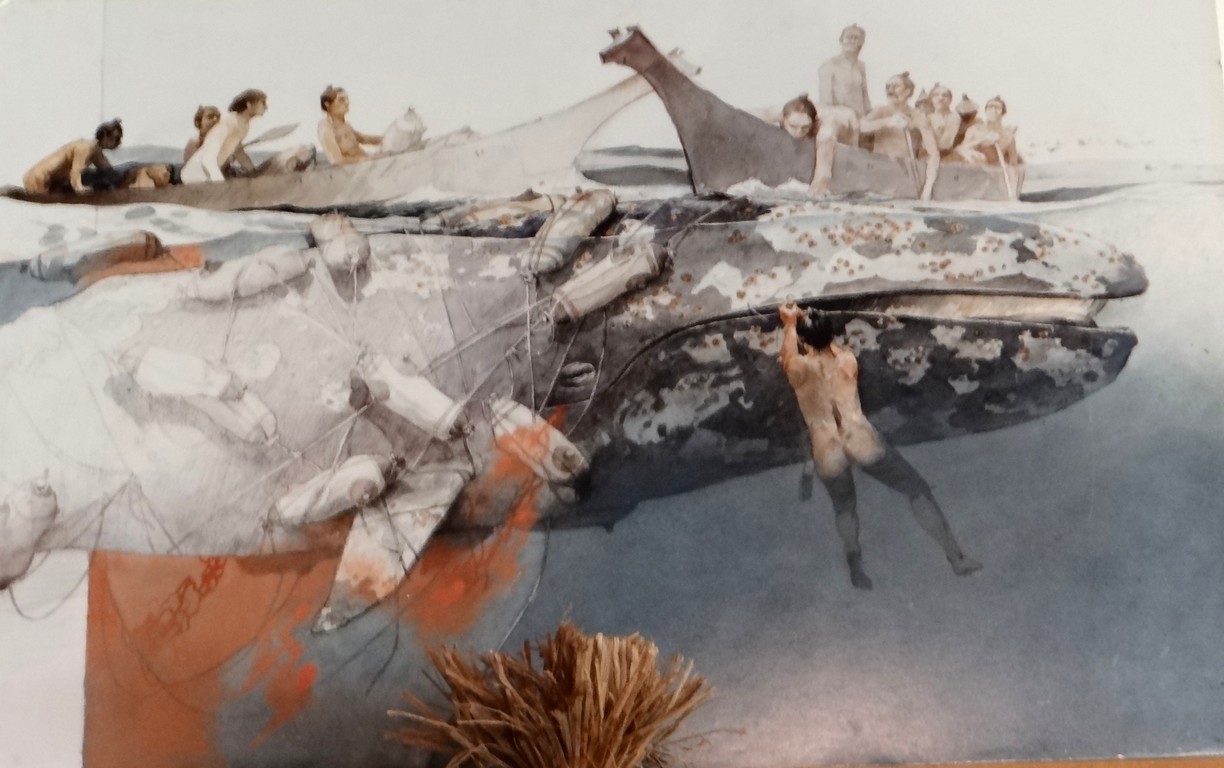
After spearing the whale and killing it, divers wrapped it in inflated seal stomachs, floated it and sewed the mouth shut so it wouldn't take on so much heavy water. They not only ate part of the fatty blubber, but used the oil to burn, and to oil hinged boxes they made in all sizes to hold and store items. The cedar boxes were made from one long plank, carefully cut lines to remove extra wood at evenly spaced intervals, were then folded and the final ends held together so tightly with pegs, the box could hold water.
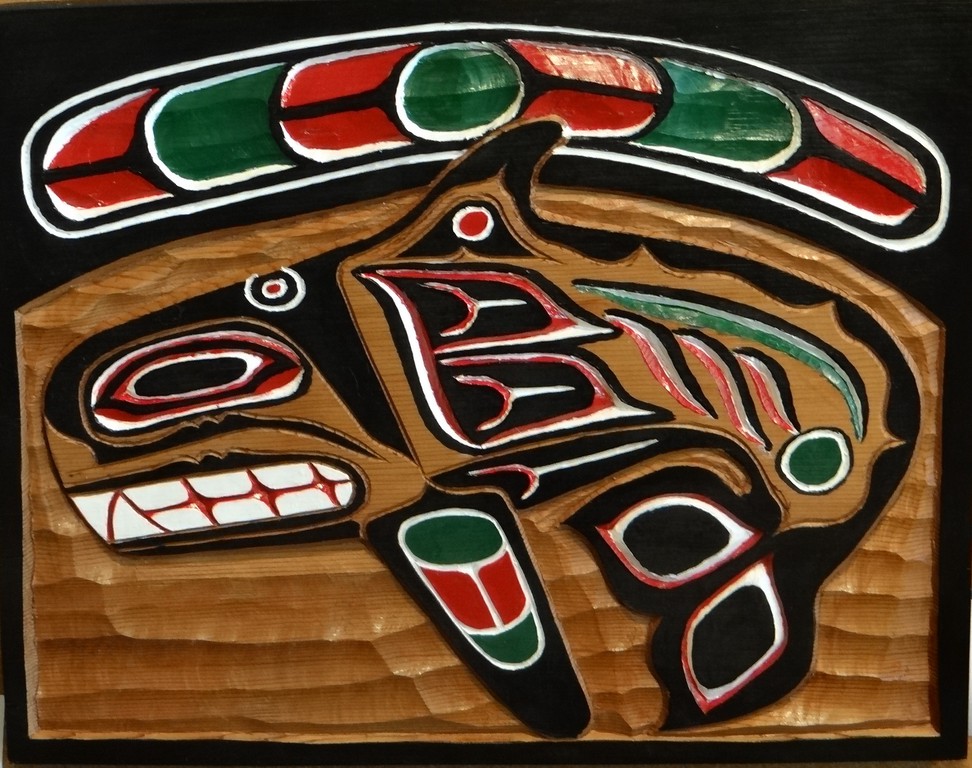
These pictures were taken by permission in the gift shop and were made by Indian artist Frank Smith. The people lived in cedar plank houses erected by tying the planks to upright trees cut and buried into the ground. The planks could be moved around, the roof opened up in good weather, closed and stuffed with moss in colder weather. They made toys and miniatures of their daily life, like rain hats, baskets, bowls, and houses. Carvings of dogs, and people and animals tell a marvelous tale of life. Blankets of woven bark but enhanced with dog hair and blue jay feathers made them warm. They didn't make metal but quickly put metal pieces that washed up on their shores to good use. They made shell jewelry and decorated their clothing. They traded with tribes around them. Their language tells us, that they ran off the "...people who live in houses on water..." One story tells how they routed what is believed to be the Spanish.
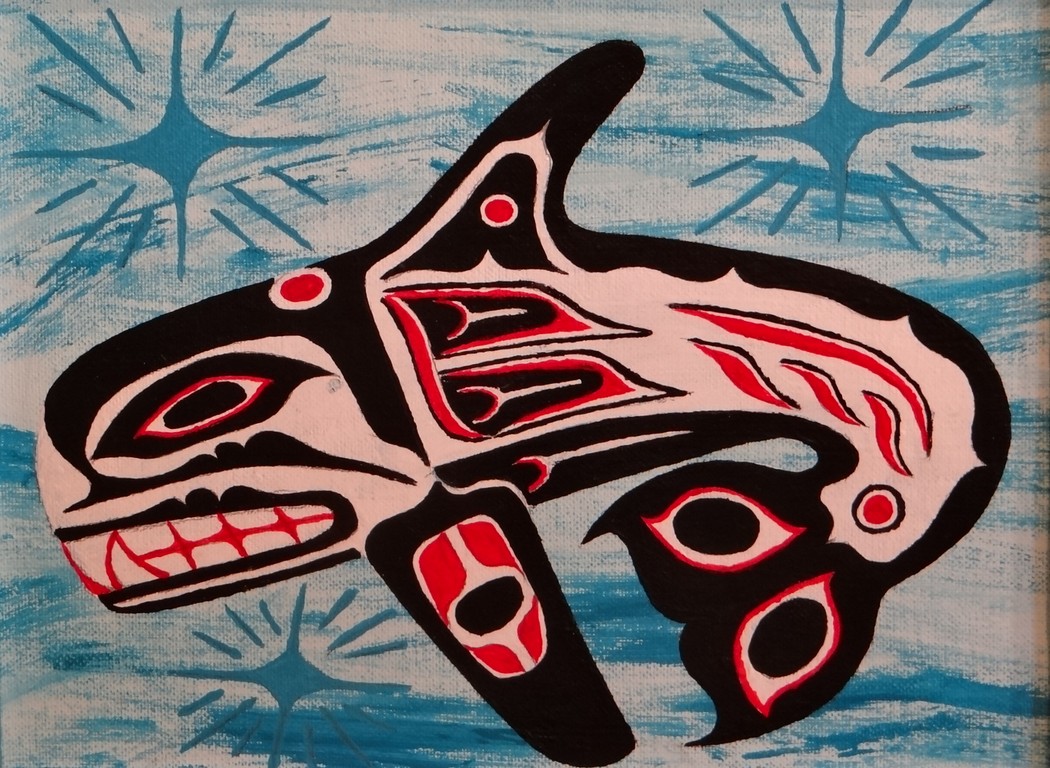
(Their art is very distinctive.)
The villagers of Ozette rescued three Japanese from a ship wreck, year unknown. In 1970, when the buried village of Ozette was discovered and a museum financed, the grateful Japanese government sent them an exquisite model of their boat that sunk. The museum has a full reproduced long house, several totems and is a be sure not to miss. The Information for this museum was characterized as a slice of life with everything a villager needed completely intact when a mudslide buried one section of the village and it lay there for 500 years in the protective clay.
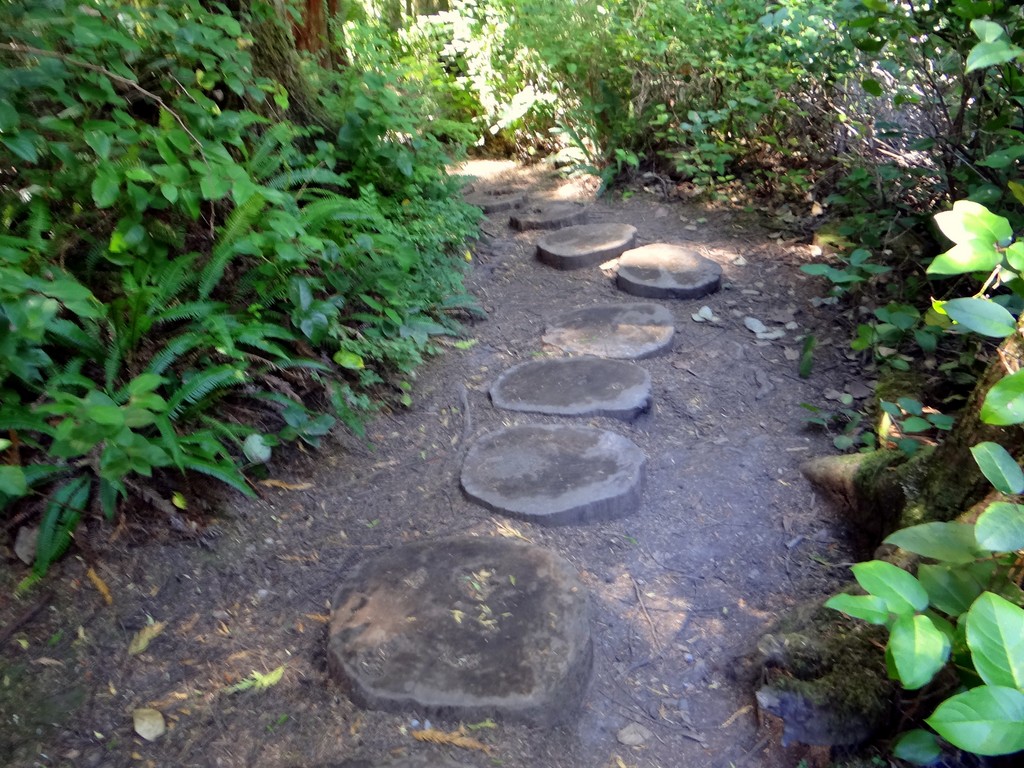
After leaving the museum, our goal was to visit the Northwestern boundary of the contiguous United States at Cape Flattery. From a parking place you walk a twisted and treacherous, (in some places), path to the point.
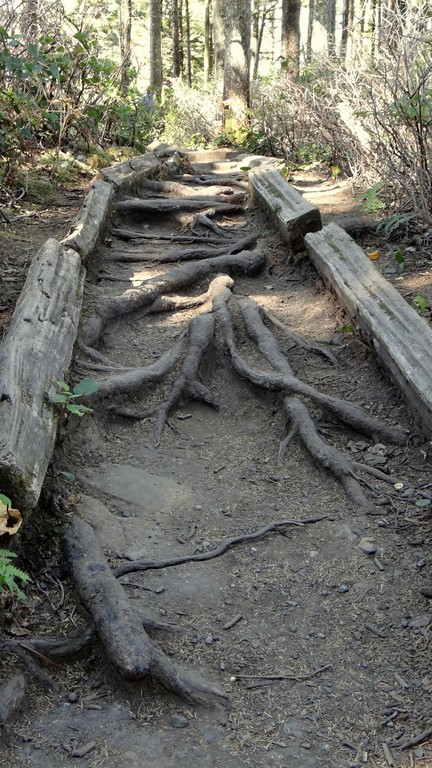
You can easily stumble over tree roots.
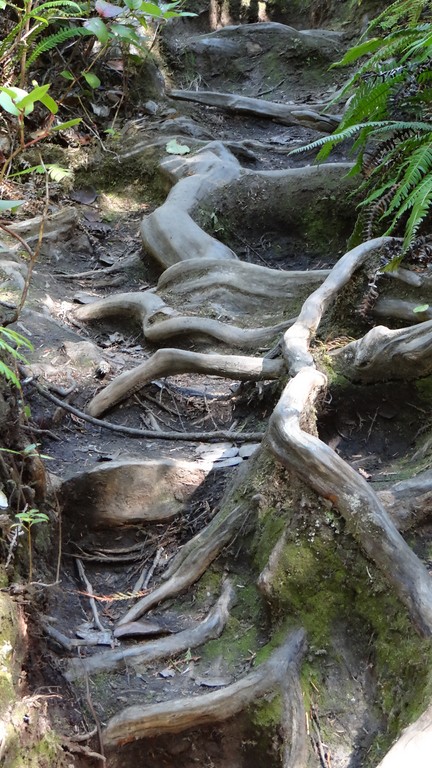
It amazes me that so many people tromping through this section of rain forest doesn't damage the trees. Many spots had board walks, over muddy, boggy areas.
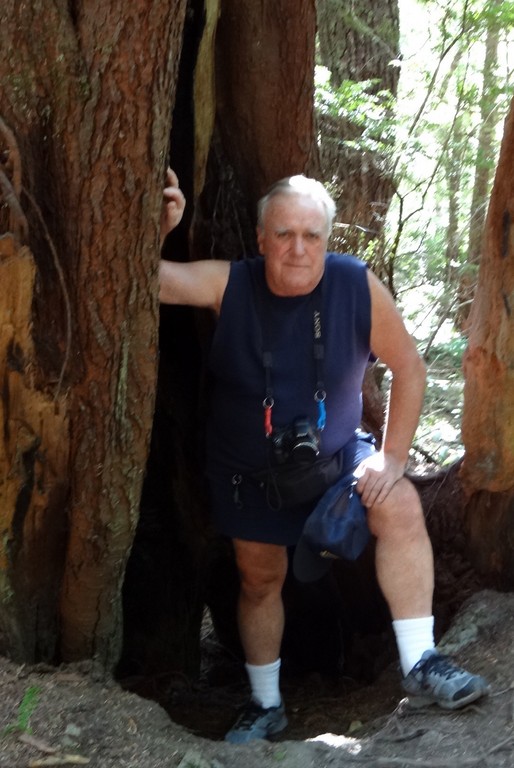
Jim fit into a burned out cedar.
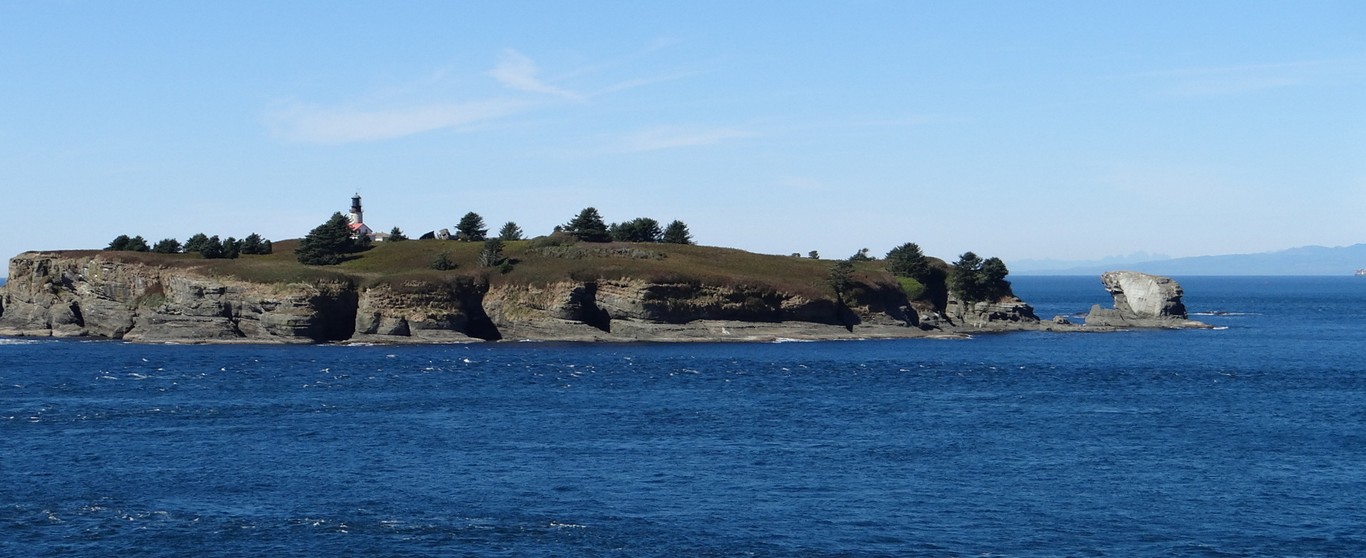
Finally, the cape. In front of us an island with a lighthouse.
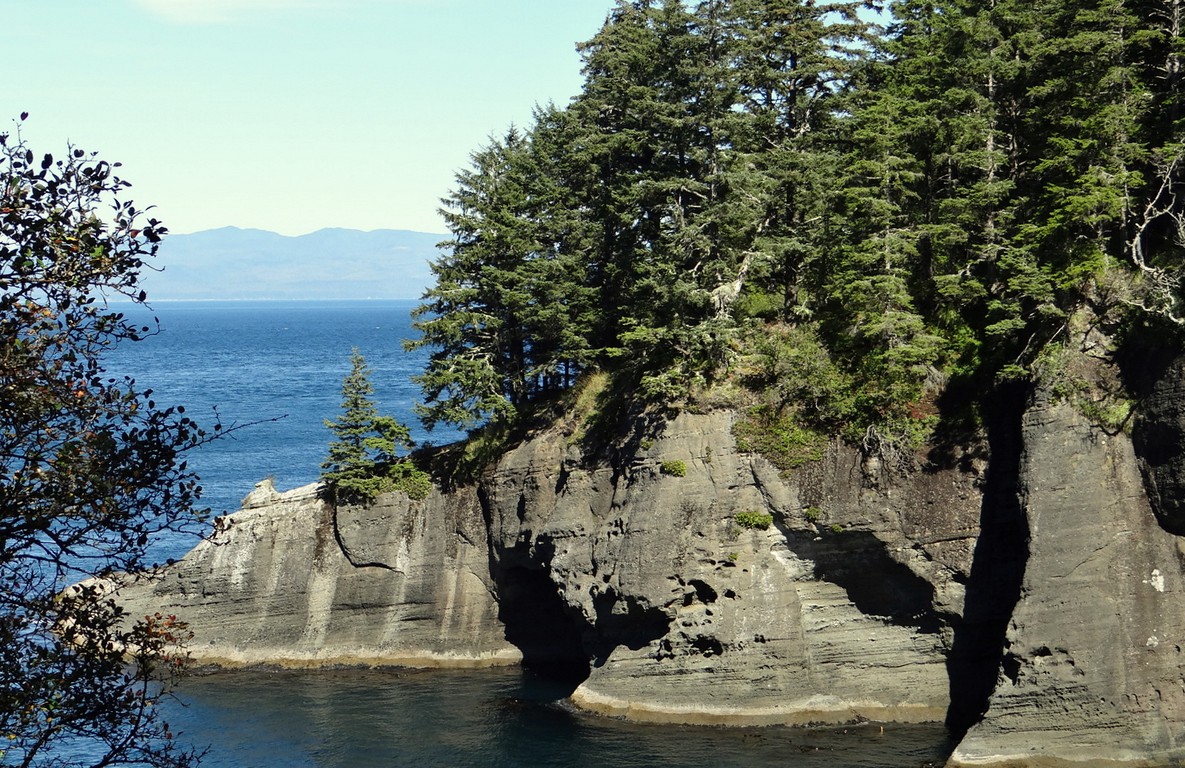
To the East, bluffs with etched water caves.
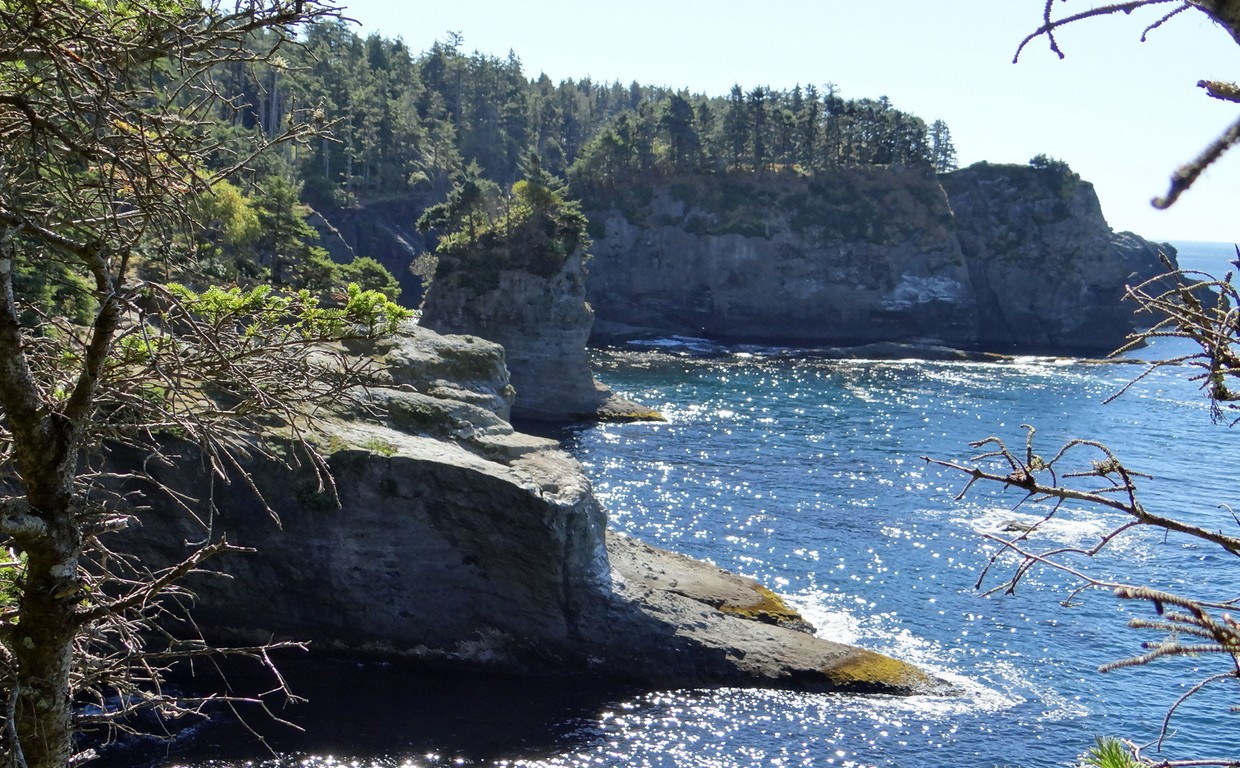
To the West, the same. The power of wind and water eroded the bluffs.
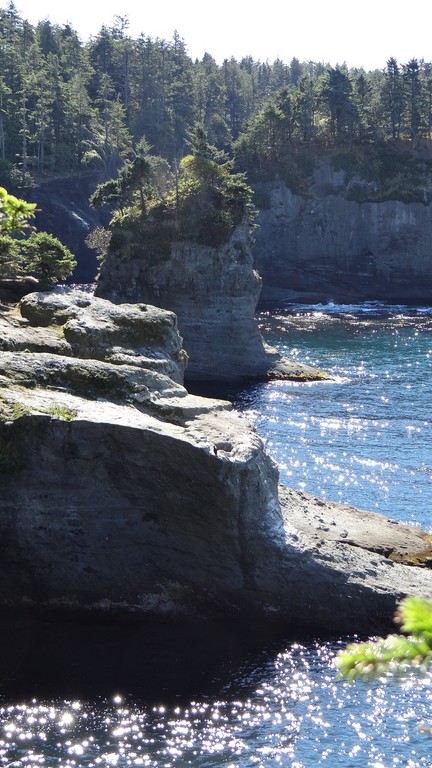
You can see a "stack".
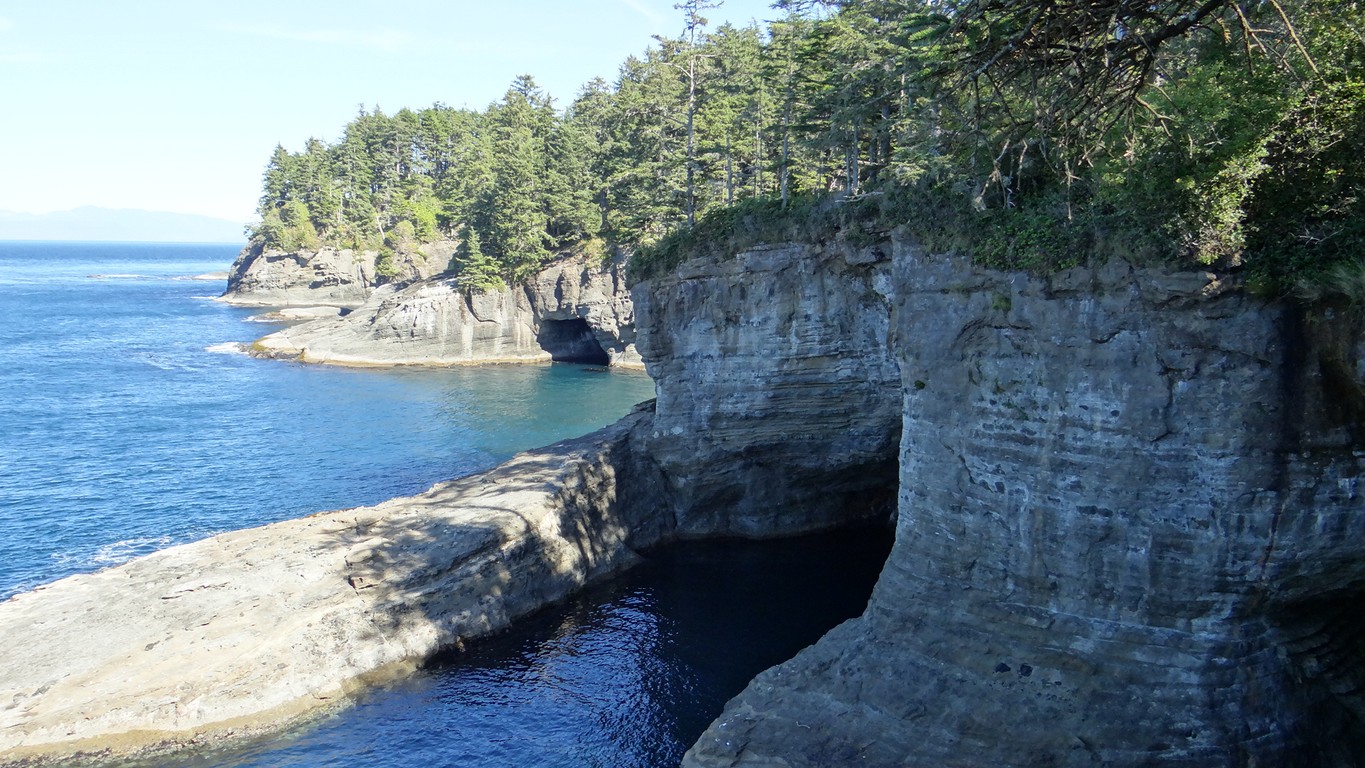
It makes you wish you could peer into these caves from a boat.
Visiting the four corners of the U.S. is on many people's bucket list. Well, now I've done one. Jim has done 3 maybe 4. Not sure.
1 comment:
supreme clothing
yeezy shoes
supreme clothing
balenciaga shoes
golden goose shoes
off white jordan 1
yeezy boost 350
nike air max
michael kors factory outlet
louboutin outlet
Post a Comment